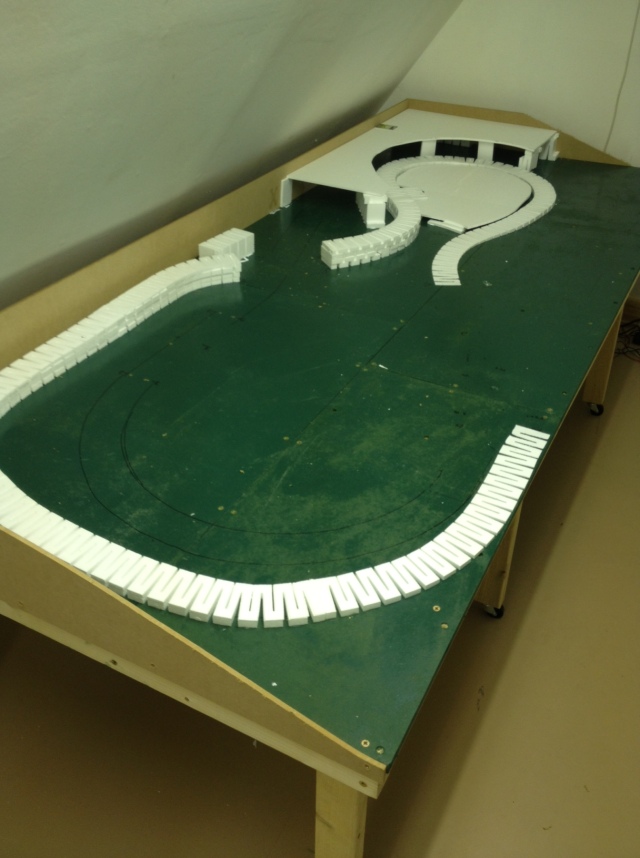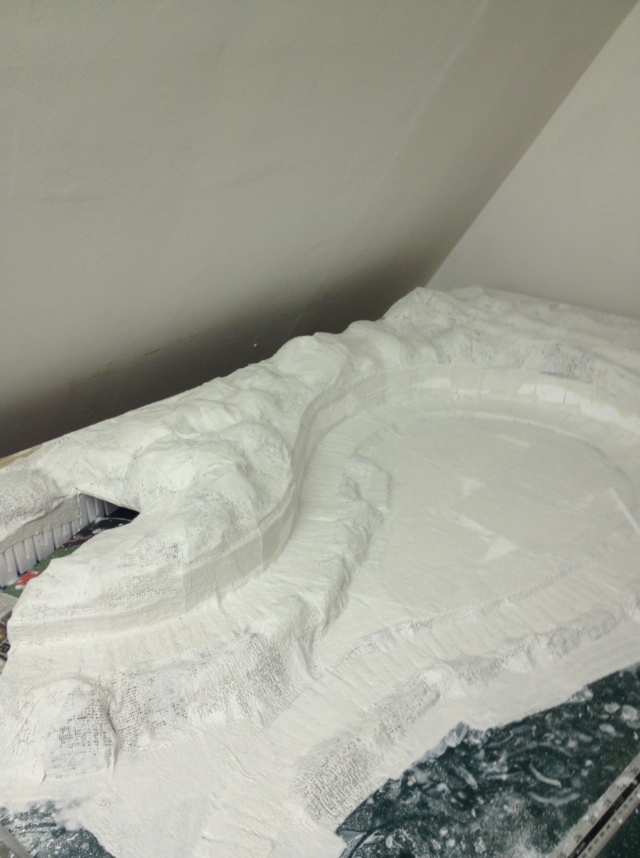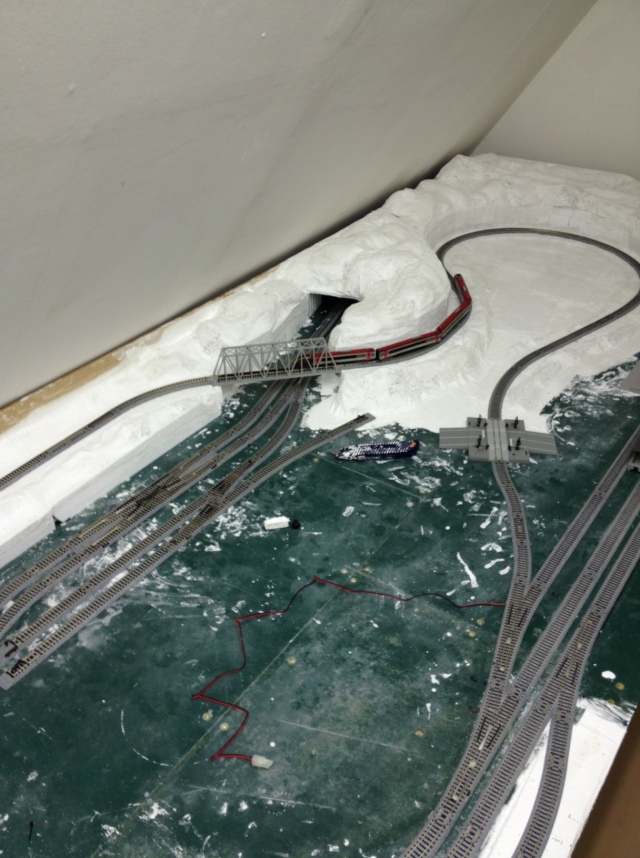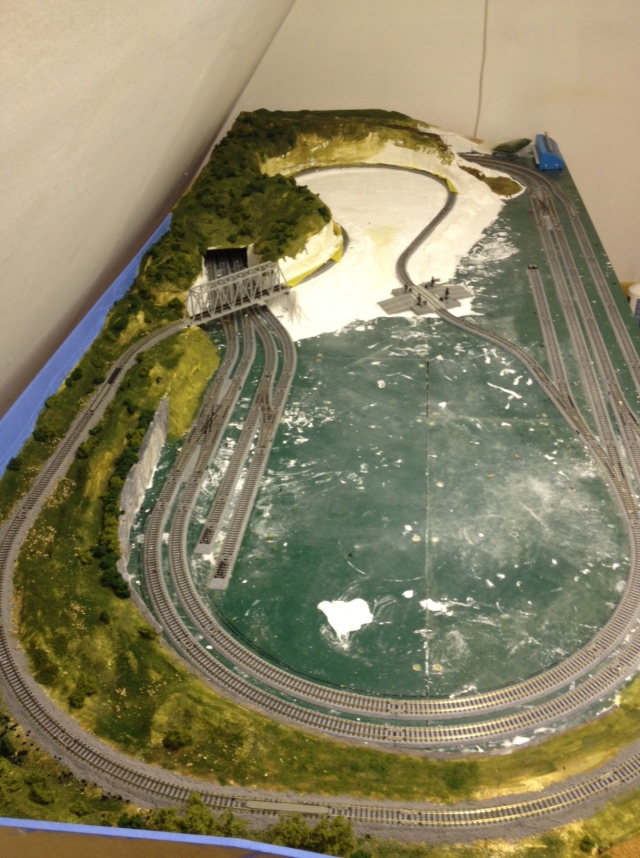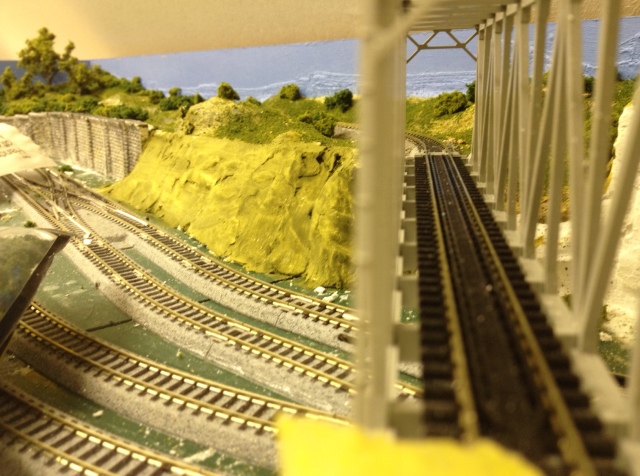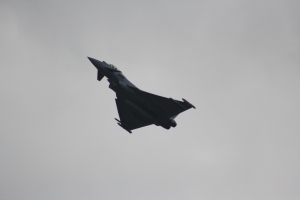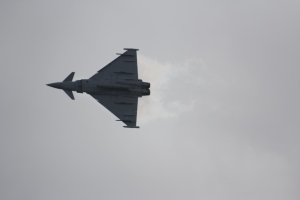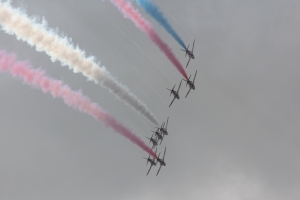Well it was Thursday the 24th of March and while scanning our twitter feed I noticed that the UK Maker Faire was on in 2 days’ time, without further ado I bought a family ticket for the weekend, booked the last hotel room I could find in Newcastle (in what turned out to be the Stag and Hen night HQ of Britain – a good night’s sleep it was not) and booked the train tickets. My alarm went off at an ungodly hour and we were on the train for 07:11 (yawn). We rolled in to Newcastle Central at a respectable 09:33 and headed to the hotel to drop our bags off.
As we arrived at the Life Science centre we were met by a huge purple puppet / Robot called BinBot, which as the name suggests was made from bins, and she was busy singing and dancing around the square.
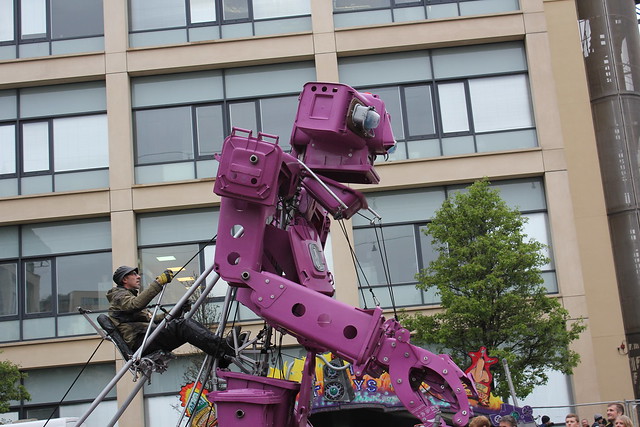
Turbo the Disco Turtle was cruising behind with a DJ wearing a snorkel playing ‘under the sea’.
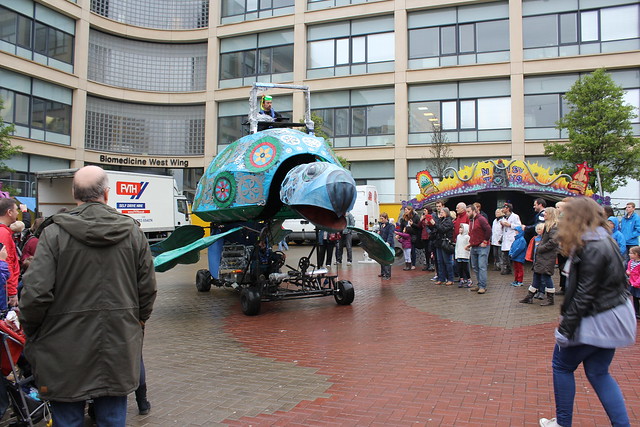
As we walked do to the front door we avoided being run over by some children being peddled around in the Flycycle and the Submercycle, a clown in a clown car and a man cycling what looked like a seat slung between two penny farthing wheels. We then passed a Dragon and a mechanical RC horse – so nothing unusual there.

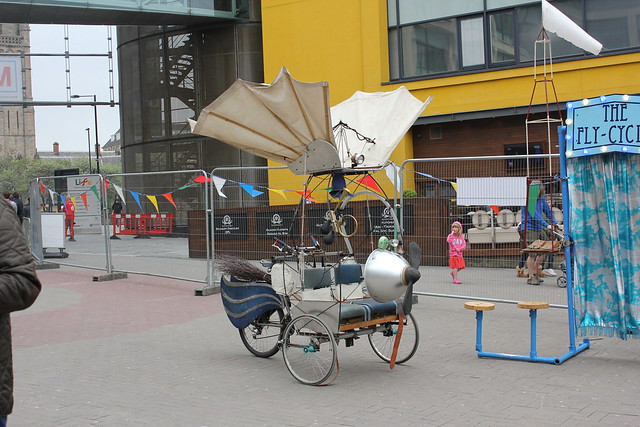
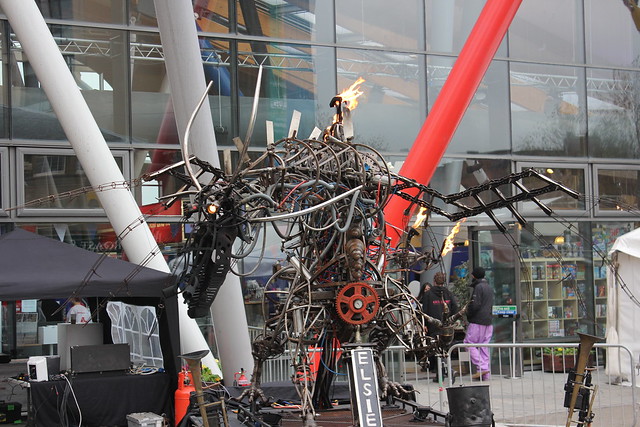
After getting through the doors we were met by a Dalek (well a few of them) made by the Northern Charity Daleks.
In a stall not so far, far away (sorry) were the Rebel Legion UK.
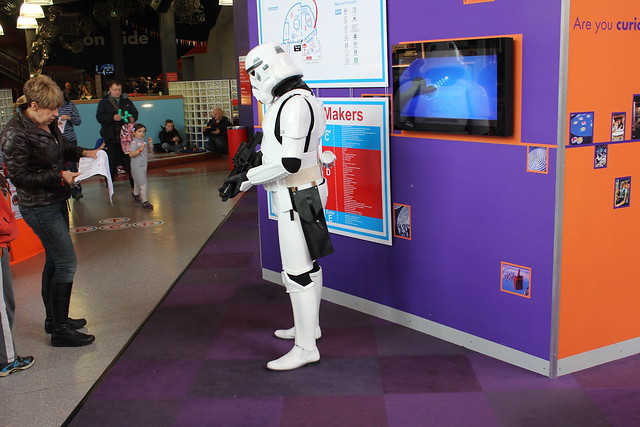
And then we were in the first of the halls, can you spot yourself?
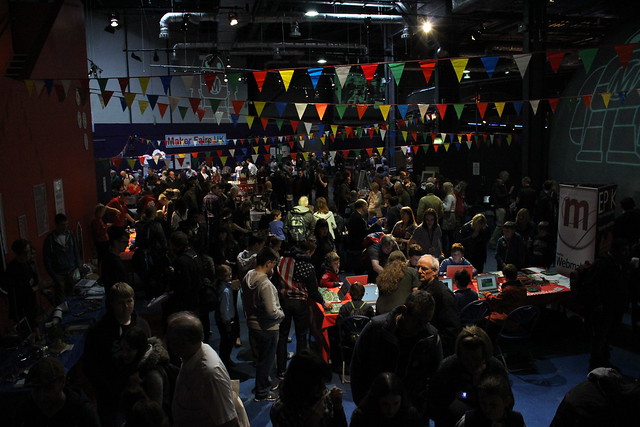
And here are some of my highlights:
Agnes RoboKnit the scarf knitting Robot.
This was truly awesome, a mannequin robot that sits and knits scarves, she also has a habit of looking up at you and creeping the bejesus out of you. She was created by Andy Noyes and if you like you can check out her Facebook page.
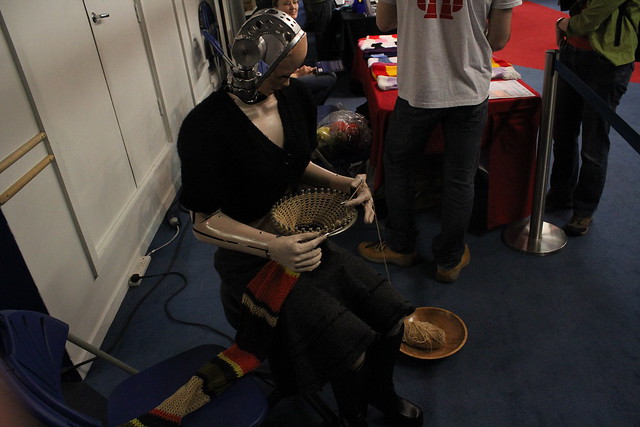
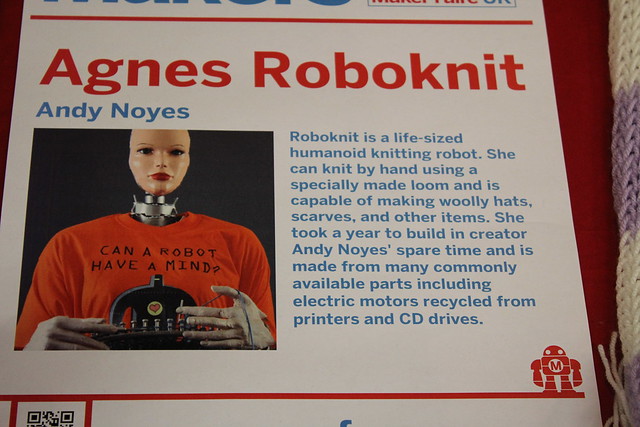
At this stand they had a very cool model railway which was controlled not only by a nice homemade controller but also via a web based app, simply by going to the URL you could start, stop, speed up, slow down and reverse the direction of the trains from anywhere with an internet connection. They also had the Bubblino which when someone tweeted #bubblino or #makerfaire_uk it would make pretty bubble!
Robot Arena – RoboChallenge.co.uk
This was loud and fun, my kids loved smashing each other’s robots in the Arena – took me back to watching Robot Wars back in the day.
They also has a disturbing looking Robot they made for the Gadget Show – it looked like they had cut Jason Bradbury’s head off and stuck it on a Robot waiters body.
Just add Sharks – Laser cutters
At this stand they make laser cutters and had some excellent examples of what you can create with them, have a wee look – the useless box was great, switch it on then it opens and a little finger switches it back off again.
BlinkStick is a USB-controlled smart pixel. It is an easy and fun way to build a notification light for your computer featuring a growing list of API implementations for programming languages and operating systems making it very easy to control.
It’s fully open source and designed to be both educational and practical.
And they also made a huge macro version of the board which was very, very cool.
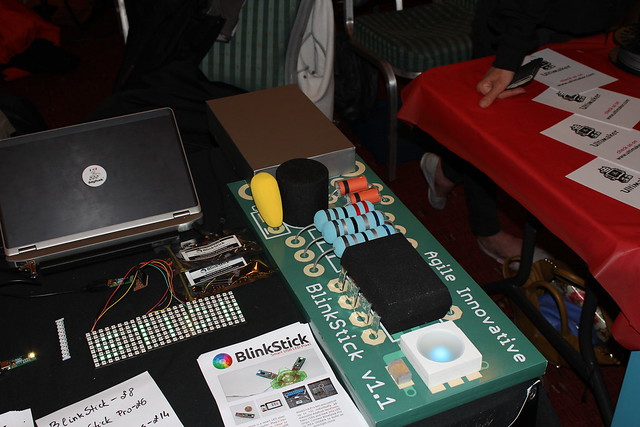
They make low cost projects as an alternative to buying an Arduino, they are all made on a breadboard and are very easy put together, although they will sell the kits they also encourage you to source your own parts or use parts you have lying around. Check them out
You can see their PoV project in this rather unprofessionally taken picture (I’m not sure how to increase the exposure time).
A huge map showing all the hackerspaces in the UK still room for more I think.
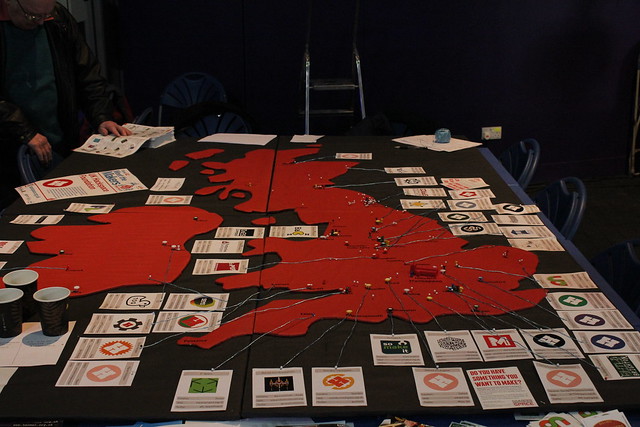
I also met the dude from Oomlout and I got 4 key rings, yay!
I also said hello to the Kitronik guys where i saw there new e-textile cat kit which you can now pick up in our store
Soldering with Mitch Altman
My kids loved the soldering workshop with Mitch Altman and they got to keep their own flashing maker badges, I’ve not seen them so quiet for ages, which was nice.

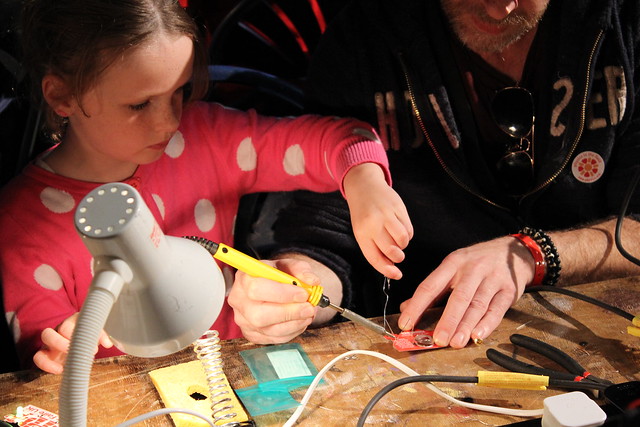
These guys had so many cool things it’s easier just to show some pictures:
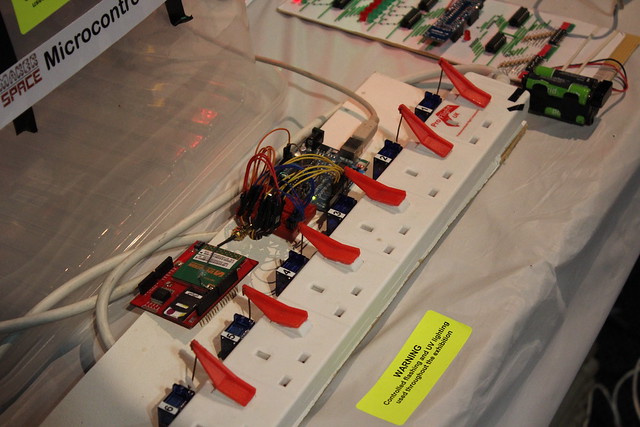
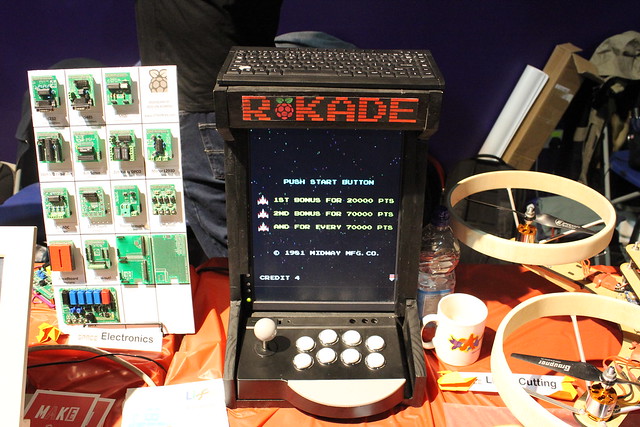
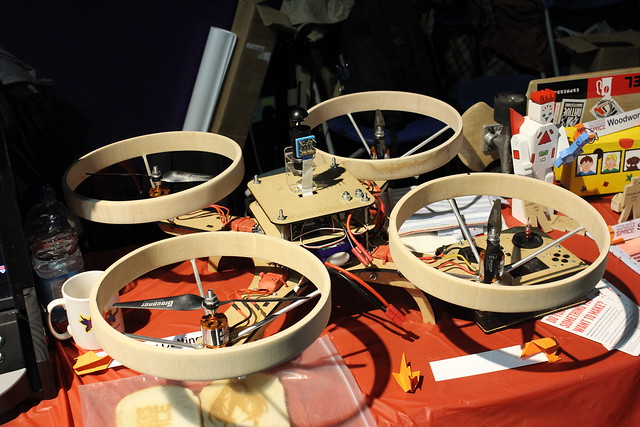
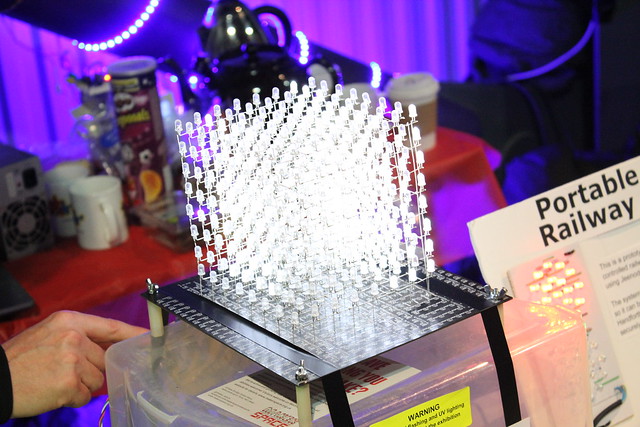
Musical floppy drives, nuff said 🙂
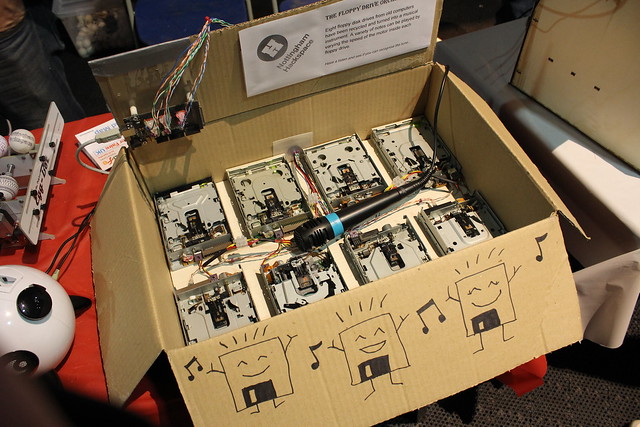
and a very heavy tactile ‘thing’
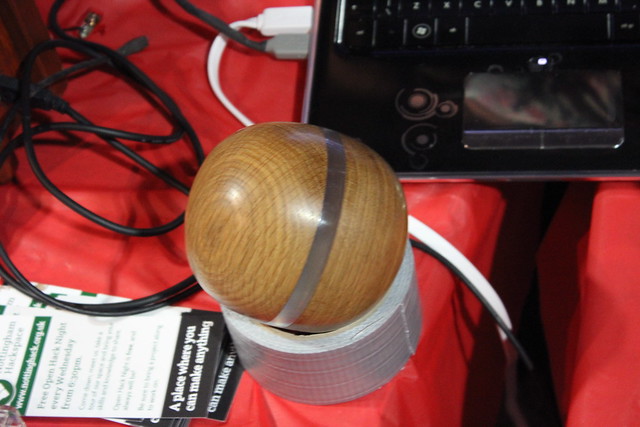
The National Museum of Computing
This stall was awesome, and now I must visit the actual museum, my wife has said so 🙂 here’s a few pictures:
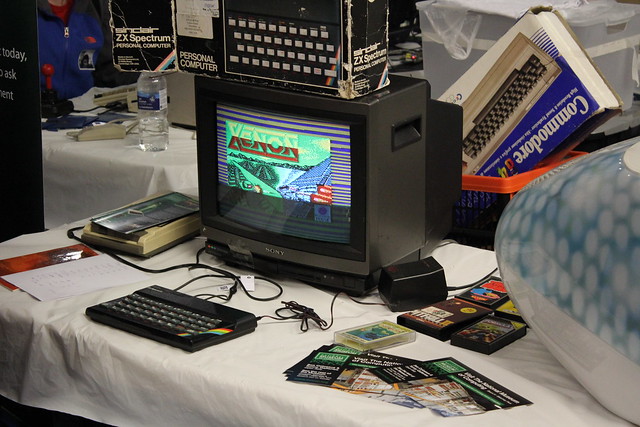
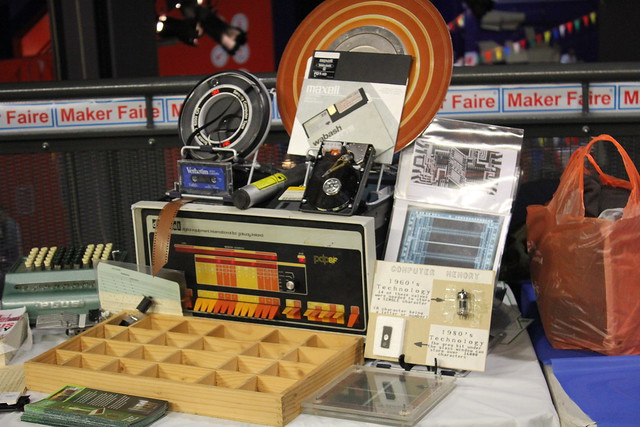


10 PRINT "Thanks for reading" 20 GOTO 10 run


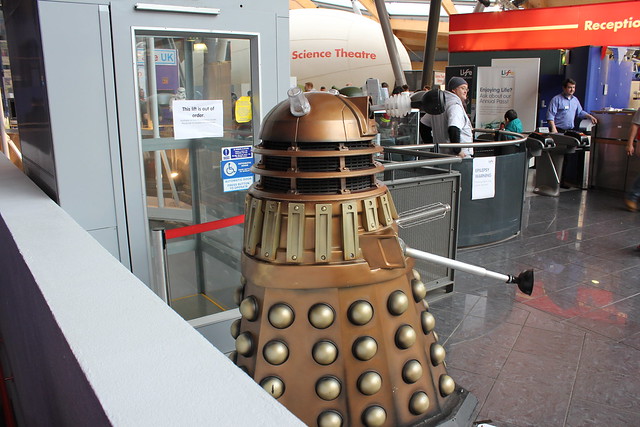

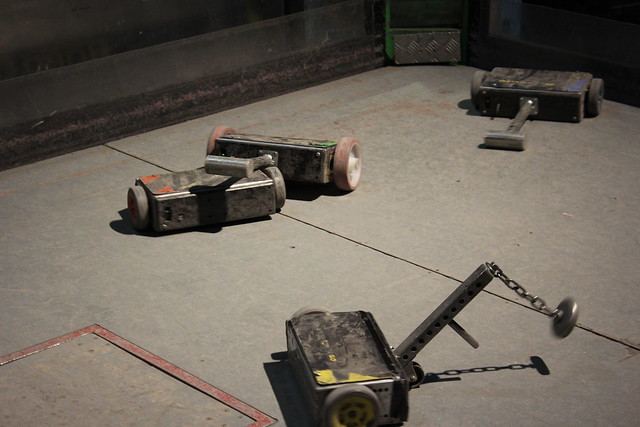

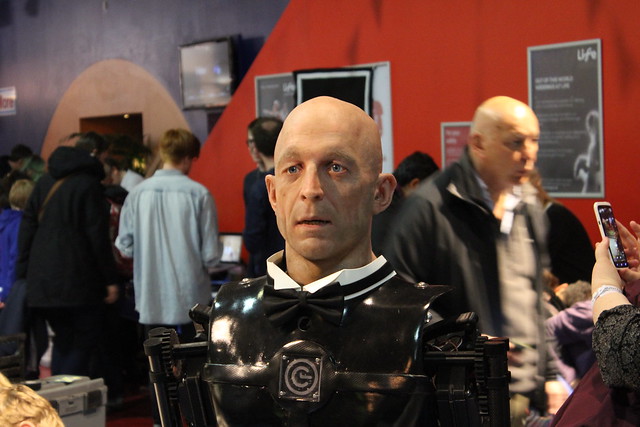
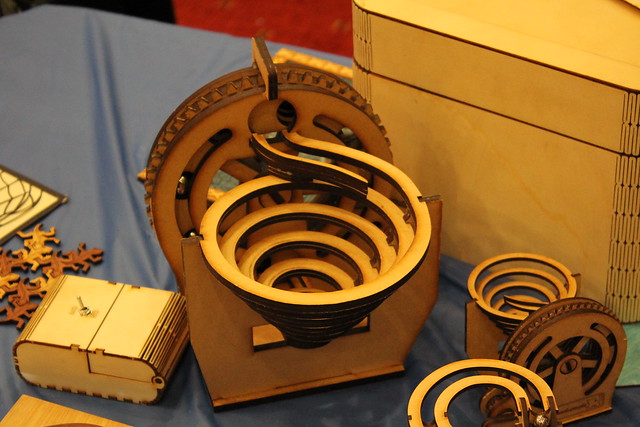
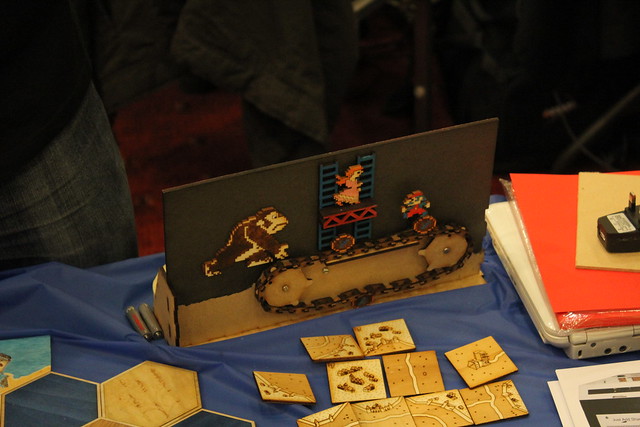

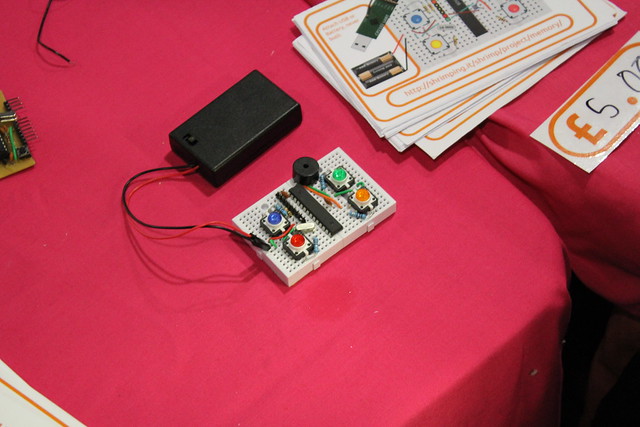
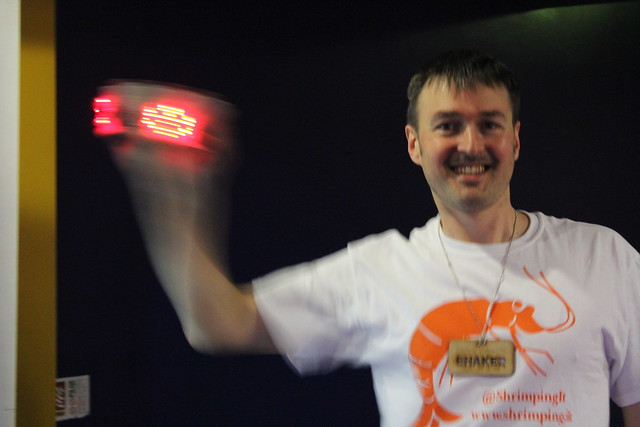
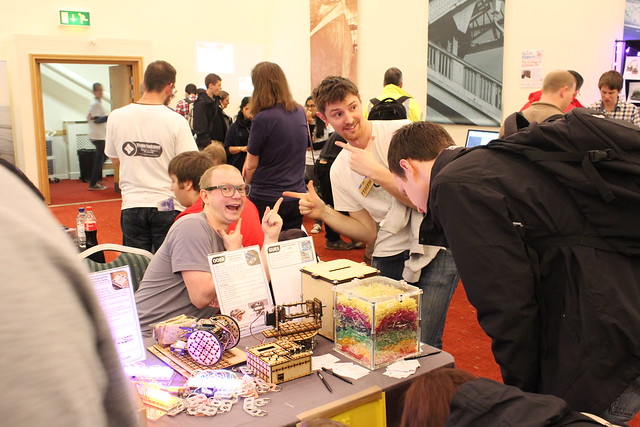
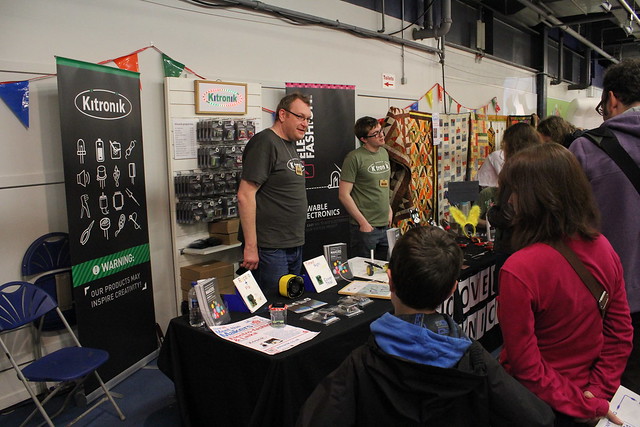



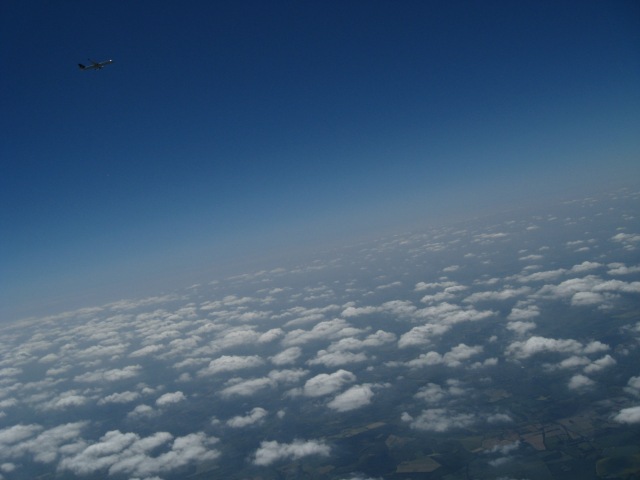

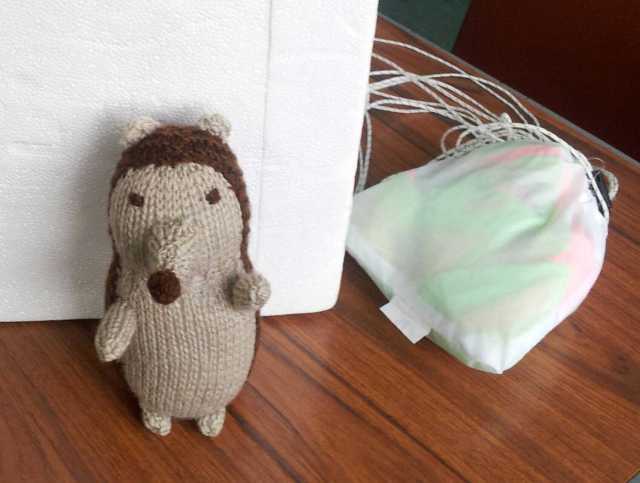

 Pic 1. First thing was to build a base board. I used CLS for the legs and frame and then used 9mm MDF as the base. Building the frame securely is important to ensure that the baseboard won’t sag over time. I then painted the whole surface of the MDF with Solvent based green paint to protect the MDF from any water ingress from Paper mache etc at later stages – since MDF is fibre board it will swell up if wet. I put castors on each leg – doesn’t help with stability but makes it a dream to slide the baseboard around the attic so I can get access where the roof slopes. The baseboard is 1metre x 2.4metres.
Pic 1. First thing was to build a base board. I used CLS for the legs and frame and then used 9mm MDF as the base. Building the frame securely is important to ensure that the baseboard won’t sag over time. I then painted the whole surface of the MDF with Solvent based green paint to protect the MDF from any water ingress from Paper mache etc at later stages – since MDF is fibre board it will swell up if wet. I put castors on each leg – doesn’t help with stability but makes it a dream to slide the baseboard around the attic so I can get access where the roof slopes. The baseboard is 1metre x 2.4metres.
